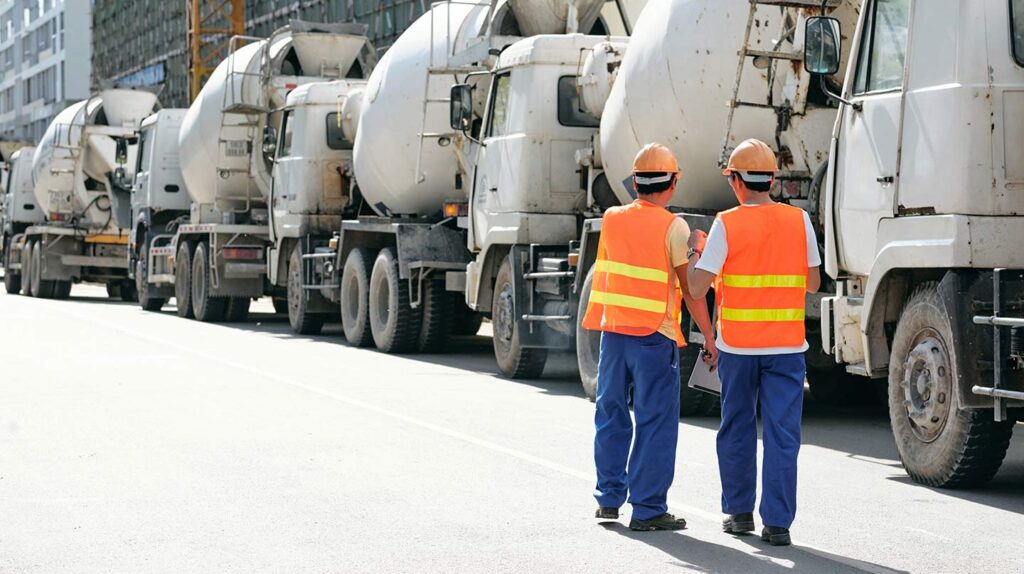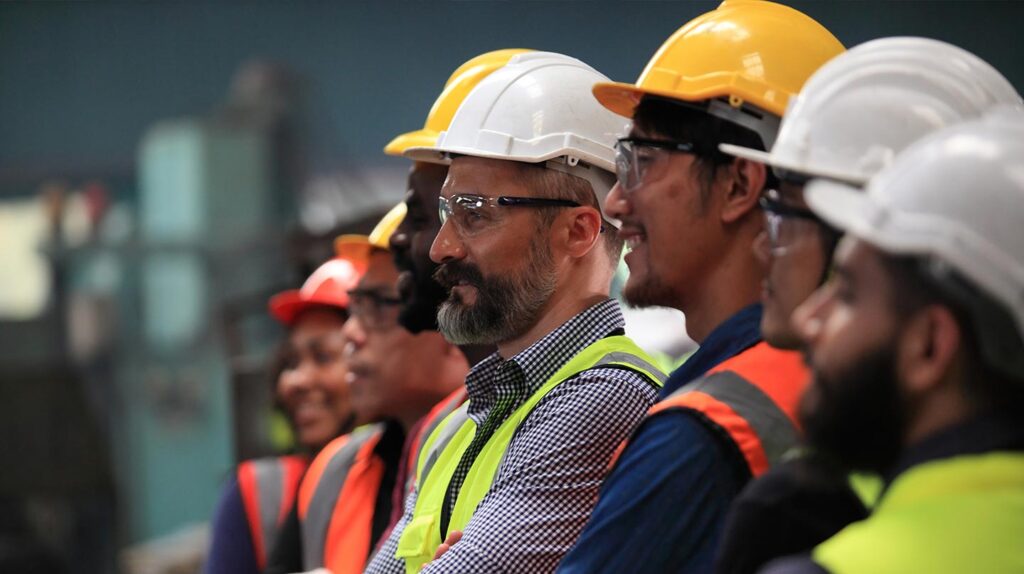
Concrete Mixer Truck Safety: Preventing Rollovers and Protecting Crews on the Road
Concrete mixer truck safety is more important than many realize, as accidents involving these vehicles can have devastating results. Every day, crews all over the country drive ready mix trucks weighing more than 60,000 pounds when fully loaded. As you can imagine, with that much poundage and movement, even small errors can have serious consequences.
Most redi mix truck accidents can be prevented through awareness, proper maintenance and smart decision-making on the road. Here, the General Chipping crew digs into the details. From the causes behind accidents to simple ways to help keep your crew operating smarter, we’re offering insights to encourage safer environments for all. Let’s get rolling.
Why Concrete Truck Accidents Happen
Mixer trucks play an essential role in construction, but they also come with built-in risks. A shifting drum, high center of gravity and changing load distribution make these vehicles more prone to rollovers than standard commercial trucks. Such challenges can put even experienced operators in dangerous situations when conditions or habits change. According to the latest data:
- The U.S. Department of Transportation (DOT) reports an estimated 821 concrete mixer truck accidents occur each year in the United States.
- Concrete and dump trucks together contribute to roughly 454 fatalities annually, according to DOT reports.
- The Center for Construction reports that transportation-related incidents made up more than 25% of all construction fatalities between 2011 and 2023.
Each of these numbers represents a person, a crew and a job site affected. Yet each also highlights an opportunity to remember that small, consistent safety habits can save lives. Construction truck accidents can often be prevented through training and maintenance. Most trace back to something preventable, such as a skipped inspection, a missed turn or a tired driver.

The Current State of Construction Fleet Safety
Safety trends show improvement across certain areas, but there’s still room to grow. In 2023, the U.S. Bureau of Labor Statistics reported 5,283 workplace fatalities, with 1,075 of those in construction. The fatal injury rate stood at 9.6 per 100,000 workers, and transportation incidents accounted for a major share.
Meanwhile, the Federal Highway Administration noted that fatal work zone crashes involving commercial motor vehicles dropped from 294 in 2021 to 246 in 2022. That’s encouraging, but overall work zone fatalities rose during that same period. Numbers like these prove that progress is happening, but it’s uneven. A constant commitment to safety is still the key to keeping your crew safe.
Mechanical issues are also a common safety concern. The Federal Motor Carrier Safety Administration links nearly 30% of large truck crashes on break failure, many of which could have been prevented with regular maintenance and inspection.
Simple Steps that Make a Big Difference
Staying safe behind the wheel often comes down to consistency and communication. Every driver, dispatcher and mechanic has a role to play in preventing life-threatening accidents.
- Train for the Vehicle You Drive: Mixer trucks behave differently than other commercial vehicles. Drivers should receive ongoing training about weight shifts, drum rotation, braking distances and how to handle uneven terrain.
- Prioritize Preventive Maintenance: Even small mechanical problems can lead to big consequences. Regularly inspect brakes, tires and drums, and schedule proactive maintenance to prevent wear and tear. Keeping drums free of hardened concrete buildup is just as important. This specialized maintenance helps ensure balanced loads, protects internal components and reduces strain on your truck’s engine and braking systems.
- Make Pre-Trip Checks a Habit: Before starting any shift, drivers should walk through a quick safety checklist. Checking lights, mirrors and tire pressure helps identify potential hazards early.
- Limit Fatigue and Distraction: Long hours on the road can take a toll. Encourage rest breaks, minimize phone use and create a culture where slowing down for safety is never questioned.
- Watch Speed and Conditions: Many mixer truck rollovers occur at speeds as low as 12 miles per hour. Always adapt driving behavior to match terrain, weather and load weight.
- Use Technology Wisely: Modern telematics systems can help track driver behavior, flag high-risk maneuvers and log vehicle health data. These insights can shape training and maintenance decisions.

Building a Safety-First Culture
Safety is more than compliance; it’s a core function that protects lives while keeping your operation running smoothly. Every person involved in the concrete process plays an integral part in preventing accidents before they occur.
Remember, a safety-first culture starts with open communication. Drivers should feel comfortable speaking up about near misses, equipment issues or scheduling pressures that could affect performance. Dispatchers can help by relaying weather alerts and road hazards in real time, while managers should take time to celebrate safe driving records and zero-incident milestones.
Creating this kind of work culture doesn’t require massive change, just consistency. Daily safety check-ins, monthly toolbox talks with your crew and friendly reminders go a long way in keeping safety front and center.
Recognizing and Rewarding Safe Habits
People respond to encouragement. Recognizing a team’s effort in achieving accident-free months and rewarding crews that maintain clean inspection logs can build long-term motivation and improved prevention.
Following safety protocol should never feel like just an item to check off a list. It’s an ongoing conversation that helps every team member take pride in their work and return home at the end of the day. True safety goes beyond the truck, too. From lifting techniques to mental health awareness, there are countless factors that play into overall crew well-being.
Concrete work will always involve risk, but thorough training, maintenance and open communication can effectively minimize those risks. Sharing lessons learned, celebrating safety milestones and keeping crews informed about changing regulations all contribute to safer outcomes on the road.
If your company has questions about concrete truck safety, or if you’d like to learn more about General Chipping’s safety-focused concrete chipping, central mixer cleaning and silo cleaning services, contact our team. We’re always ready to help you keep your equipment and your team ready to roll.
